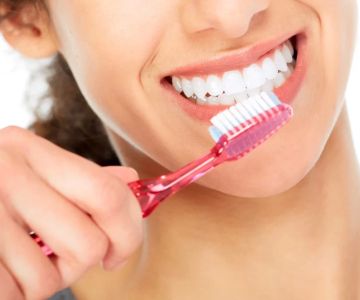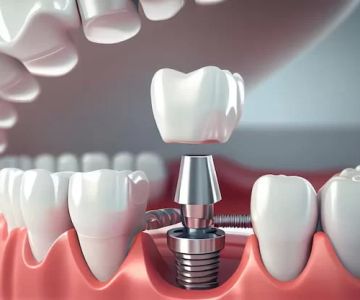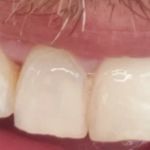What is the Difference Between Gingivitis and Periodontitis? A Detailed Guide to Gum Disease
- Understanding Gingivitis
- What is Periodontitis?
- Symptoms of Gingivitis and Periodontitis
- Causes and Risk Factors for Gum Disease
- Treatment Options for Gingivitis and Periodontitis
- Prevention Tips for Healthy Gums
1. Understanding Gingivitis
Gingivitis is the mildest form of gum disease and is primarily caused by the accumulation of plaque on your teeth. Plaque is a sticky film of bacteria that forms on your teeth when you eat or drink. Gingivitis occurs when this plaque leads to inflammation of the gums, causing them to become red, swollen, and bleed easily, especially when brushing or flossing.
Fortunately, gingivitis is reversible with proper oral hygiene and regular dental visits. It is often an early warning sign that you may be at risk for more serious gum diseases if left untreated.
2. What is Periodontitis?
Periodontitis is a more severe form of gum disease that develops when gingivitis is left untreated. It affects not only the gums but also the deeper structures supporting the teeth, including the bone. In periodontitis, the inflammation spreads deeper into the gums, causing them to pull away from the teeth and form pockets of infection. These pockets can collect bacteria and debris, further damaging the tissue and bone.
Unlike gingivitis, periodontitis can lead to tooth loss if not treated. It may require more aggressive treatments, such as scaling and root planing, and in some cases, surgery.
3. Symptoms of Gingivitis and Periodontitis
3.1. Symptoms of Gingivitis
The symptoms of gingivitis are typically mild, making it easy to overlook. Common signs include:
- Red, swollen gums
- Bleeding gums when brushing or flossing
- Bad breath (halitosis)
- Receding gums
If you notice these symptoms, it's important to take immediate action to improve your oral hygiene before the condition worsens.
3.2. Symptoms of Periodontitis
Periodontitis comes with more severe symptoms, including:
- Pain when chewing
- Loose teeth
- Persistent bad breath
- Gum recession, with the teeth appearing longer than usual
- Bleeding gums, even without brushing
- Pockets between the teeth and gums that may contain pus
If you experience these symptoms, it is crucial to visit a dentist as soon as possible for treatment. Periodontitis requires professional intervention to prevent further damage.
4. Causes and Risk Factors for Gum Disease
Both gingivitis and periodontitis are primarily caused by poor oral hygiene. However, several other factors can increase your risk of developing gum disease:
4.1. Smoking or Chewing Tobacco
Tobacco use is one of the biggest risk factors for gum disease. Smoking decreases blood flow to the gums, hindering healing and making you more susceptible to infections.
4.2. Poor Nutrition
A diet high in sugar and low in nutrients can contribute to plaque build-up and weaken the immune system, making it harder to fight off gum infections.
4.3. Hormonal Changes
Hormonal changes during pregnancy, menstruation, or menopause can make your gums more sensitive to plaque, increasing the risk of gingivitis and periodontitis.
4.4. Medical Conditions
Certain medical conditions, such as diabetes, heart disease, and autoimmune disorders, can make you more prone to developing gum disease. Medications like antihistamines and those for high blood pressure can also lead to dry mouth, increasing the risk of plaque formation.
5. Treatment Options for Gingivitis and Periodontitis
Gingivitis can usually be treated with improved oral hygiene habits, such as brushing twice a day, flossing daily, and visiting the dentist for regular cleanings. In most cases, gingivitis will resolve after a professional cleaning and improved at-home care.
5.1. Treatments for Gingivitis
- Professional cleaning by a dentist or dental hygienist
- Regular brushing with fluoride toothpaste
- Flossing to remove plaque and food particles from between teeth
- Antiseptic mouthwash to reduce bacteria
5.2. Treatments for Periodontitis
For periodontitis, treatment may involve deeper cleaning procedures and sometimes surgical intervention. Options include:
- Scaling and root planing: A deep cleaning procedure that removes plaque and tartar from below the gum line
- Periodontal surgery: In severe cases, surgical procedures may be needed to restore gum health and prevent tooth loss
- Antibiotics: To fight bacterial infections that contribute to gum disease
While gingivitis is reversible, periodontitis requires more intensive care, and timely treatment is essential to avoid tooth loss.
6. Prevention Tips for Healthy Gums
Preventing gum disease is largely within your control. Here are a few tips to maintain healthy gums:
6.1. Maintain Good Oral Hygiene
Brushing twice a day with fluoride toothpaste and flossing daily is the most effective way to prevent gingivitis and periodontitis. Make sure to clean all surfaces of your teeth and gums, including the tongue.
6.2. Eat a Healthy Diet
Consume a balanced diet rich in vitamins and minerals to support your immune system and promote gum health. Avoid excessive sugary foods and drinks, which can lead to plaque formation.
6.3. Regular Dental Visits
Visit your dentist regularly for check-ups and professional cleanings. This will help catch any early signs of gingivitis or periodontitis before they progress into more serious issues.
By following these simple yet effective tips, you can significantly reduce the risk of developing gum disease.
If you’re experiencing any of the symptoms of gingivitis or periodontitis, don’t delay seeking treatment. For more information on gum disease prevention and treatment, or to find professional oral care products, visit Dentistry Toothtruth.







 Maui Whitening Orlando4.0 (32 review)
Maui Whitening Orlando4.0 (32 review) Bloomington Southside Dental Care3.0 (26 review)
Bloomington Southside Dental Care3.0 (26 review) Christiana Dental Center4.0 (650 review)
Christiana Dental Center4.0 (650 review) Carolina Dental Arts - New Bern Ave4.0 (152 review)
Carolina Dental Arts - New Bern Ave4.0 (152 review) Equitas Health Short North Medical Center3.0 (96 review)
Equitas Health Short North Medical Center3.0 (96 review) Prosthodontics of Madison - Kendra Schaefer, DMD & Christine Roenitz, DMD4.0 (25 review)
Prosthodontics of Madison - Kendra Schaefer, DMD & Christine Roenitz, DMD4.0 (25 review) The Importance of Oral Health Education During Pregnancy for a Healthy Pregnancy
The Importance of Oral Health Education During Pregnancy for a Healthy Pregnancy Best Tips for Brushing Your Teeth Properly for Healthy Gums: Essential Techniques for Oral Health
Best Tips for Brushing Your Teeth Properly for Healthy Gums: Essential Techniques for Oral Health Why Skipping Dental Checkups Can Lead to Bigger Oral Health Problems
Why Skipping Dental Checkups Can Lead to Bigger Oral Health Problems Advantages of Porcelain Dental Restorations
Advantages of Porcelain Dental Restorations How Can Diabetes Cause Tooth and Gum Problems? Preventing and Managing Oral Health Issues
How Can Diabetes Cause Tooth and Gum Problems? Preventing and Managing Oral Health Issues Healthy Habits for Promoting Good Oral Health and Hygiene: Tips for a Healthy Smile
Healthy Habits for Promoting Good Oral Health and Hygiene: Tips for a Healthy Smile